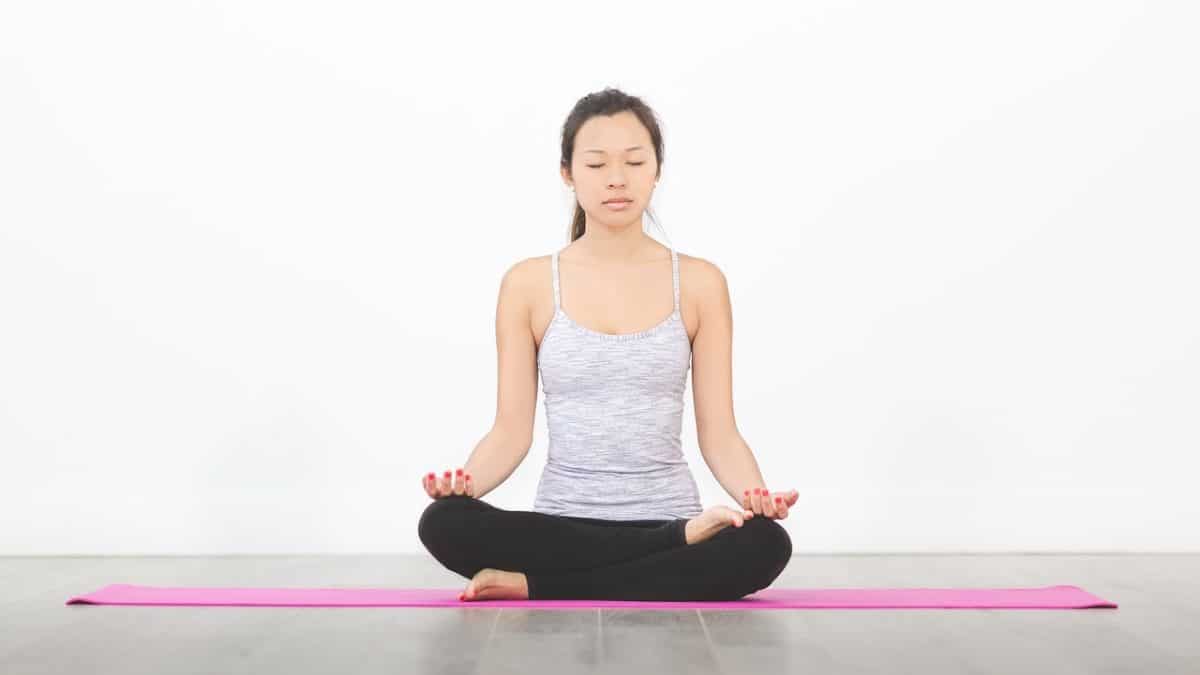Introduction
Ardha Padmasana is the gateway to Lotus Posture. The English-speaking community calls this pose Half Lotus Pose. Though it is not as difficult as the Lotus Posture, it gives most of the benefits of the Lotus Posture. Hence it is one of the important yoga postures for meditation.
Classical Yoga Texts does not consider Half Lotus Pose as a separate yoga pose. Yet it is still helpful in learning advanced poses like Lotus Pose and Adept Pose.
Let us look at its meaning, step-by-step procedure, and benefits.
Ardha Padmasana Meaning
The Sanskrit term Ardha means half. Padmasana means Lotus pose. Hence Ardha Padmasana is Half Lotus Pose.
Ardha Padamasana Procedure
Safety and Precautions
Those who have disorders like Sciatica or degenerative disc should avoid this posture.
Persons who have undergone knee surgery or have knee ailments should avoid this posture.
If pain or discomfort is felt by one who has just started this practice should also avoid this. In case of doubt, one should seek the advice of a competent medical healthcare provider.
Preparatory Asanas
Lotus posture requires the flexibility of hips and knees. For Indians it is easy. They sit in a crossed-legged pose more often than Westerners. Hence the hips are more flexible to perform cross-legged poses. For others, it is a little hard to get mastery. The practice of following posture may help.
- Sukhasana (Easy Pose)
- Gomukhasana (Cow Head Pose)
- Titali Asana (Butterfly Pose)
- Baddha Konasana (Bound Angle Pose)
- Janusirsasana (Head to Knee Pose)
- Ardha Matsyendrasana (Half Matsyendranath’s Pose)
Ardha Padmasana Steps
Now let us have the steps involved.
- Sit with your legs stretched
- Bend one leg and place the foot on the opposite thigh in such a way that the sole is placed as near to the pelvic bone as possible
- Bend the other leg and place the foot under the opposite leg
- The head and spine should be erect and be in a straight line and both knees should touch the ground
- Place the hands on the knees in Jnana Mudra or Chin Mudra
- Close the eyes and place the mind in between the eyebrows
- Keep your breath as slow as possible
Follow up Asanas
Immediately after performing the Half Lotus Pose, one should practice any one of the following poses. During the performance of Half Lotus Pose, blood blows to the legs are restricted. The follow-up poses will restore the blood flow.
Beginners Tips
A beginner who has trouble performing this pose may sit near a wall in such a way his back and head are being supported by the wall. Or one may use blocks and cushions until perfection is attained.
Common Mistakes
One of the common mistakes while performing Half Lotus Pose is not changing the leg to place it on the thigh. It is necessary for one should use both legs equally. A better way is to change the leg for alternative yoga sessions. In other words, if you have placed the right leg on the left thigh in one session, you should use the leg on the right thigh for the next session
Ardha Padmasana Benefits
One gets the same benefits as Lotus Pose. However, the degree of benefits may be lower.
- It gives stability and peace of mind and drives away stress and anxiety
- Half Lotus Pose helps in Meditation and Pranayama
- It restricts blood flow to the lower part of the body. This helps in increasing digestive power.
- It helps in therapeutic conditions like Hypertension, Type II Diabetes, and Cardiac ailments.
- It helps in mastering advanced postures like Lotus Pose and Adept’s Pose.
